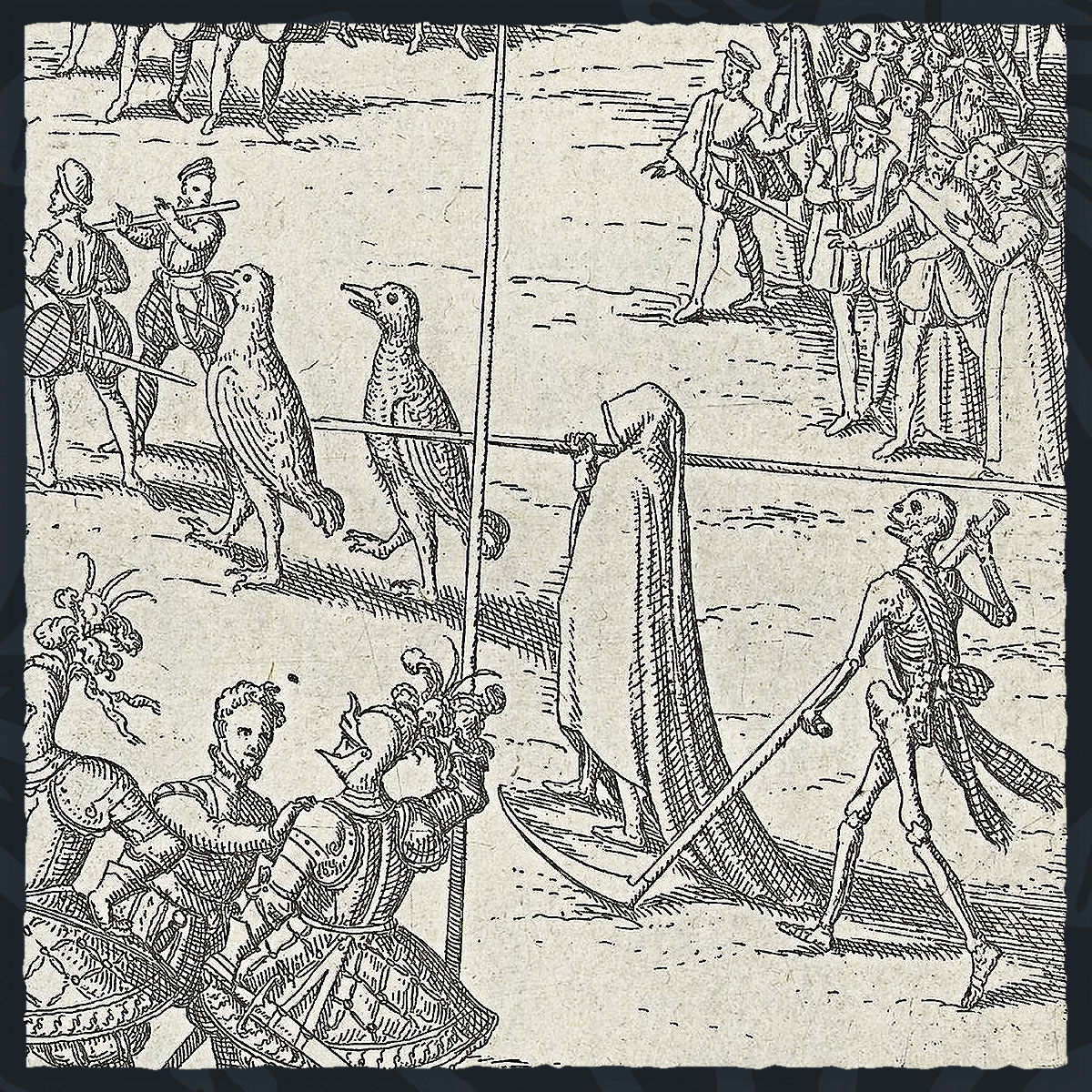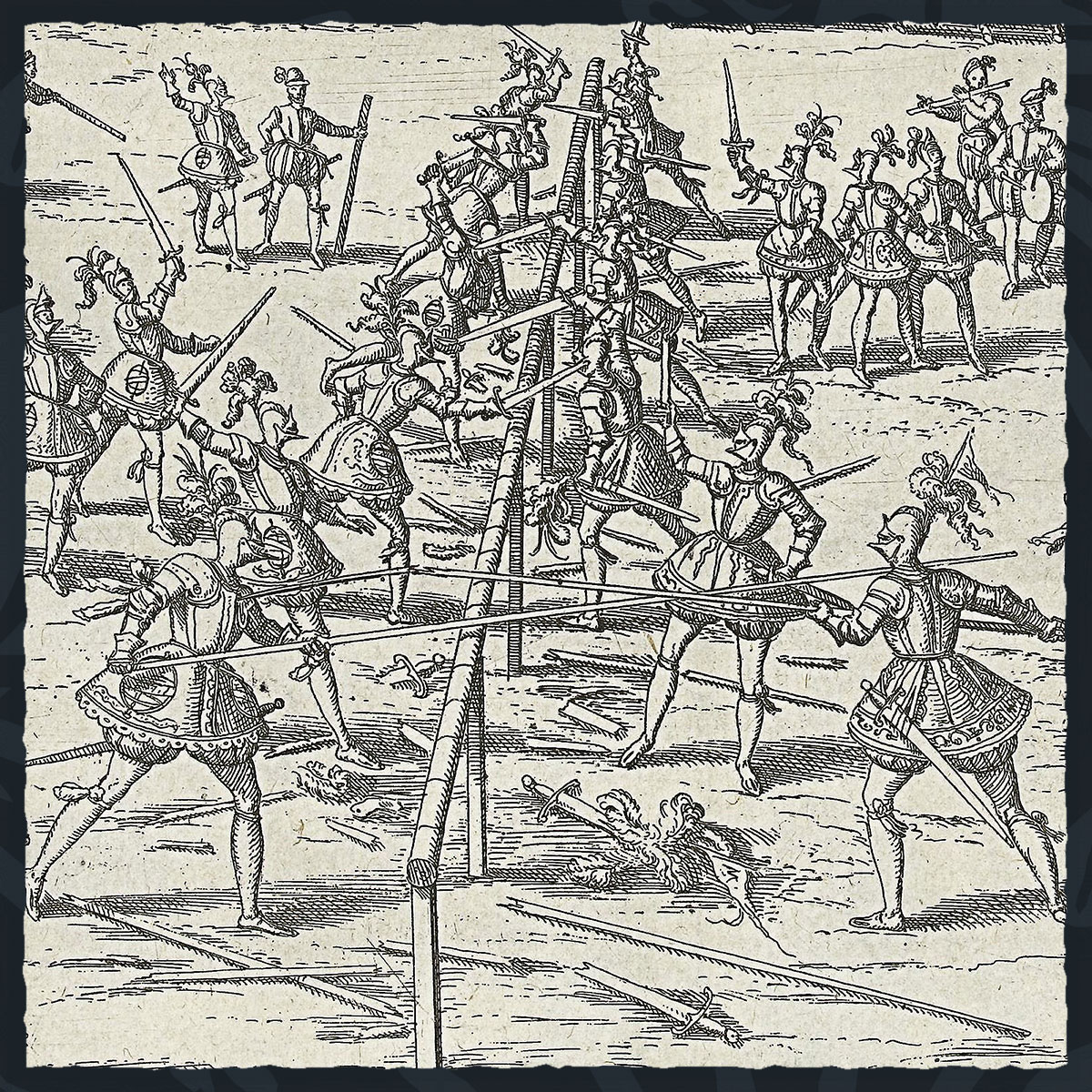
Tournament at the Barriers, 1569, by Hogenberg
It is a popular misconception to think that the idea of chivalry and chivalric tournaments were entirely old-fashioned and viewed with scorn by the sixteenth century (too many overly literal readings of Don Quixote for that, I think).
While the role of the armed military class was firmly on the road to professionalism by the fifteenth century, Western European noblemen still viewed their station as fundamentally chivalric. As the nature of warfare – both on the field of battle and the recruitment and logistics surrounding it – transformed from the Late Medieval period to the massive armies of mercenaries in the “pike and shot” era of the 1500s-1600s, performative trappings of chivalric culture became all the more important.
The nature of tournaments evolved, as well. Tournaments “at the barrier” became more popular, particularly as the sixteenth century moved on: combatants wearing “half armor,” that is plate armor from the waist up, would take spears, swords, and even poleaxes (popular still earlier in the period) and fight over stationary barriers.
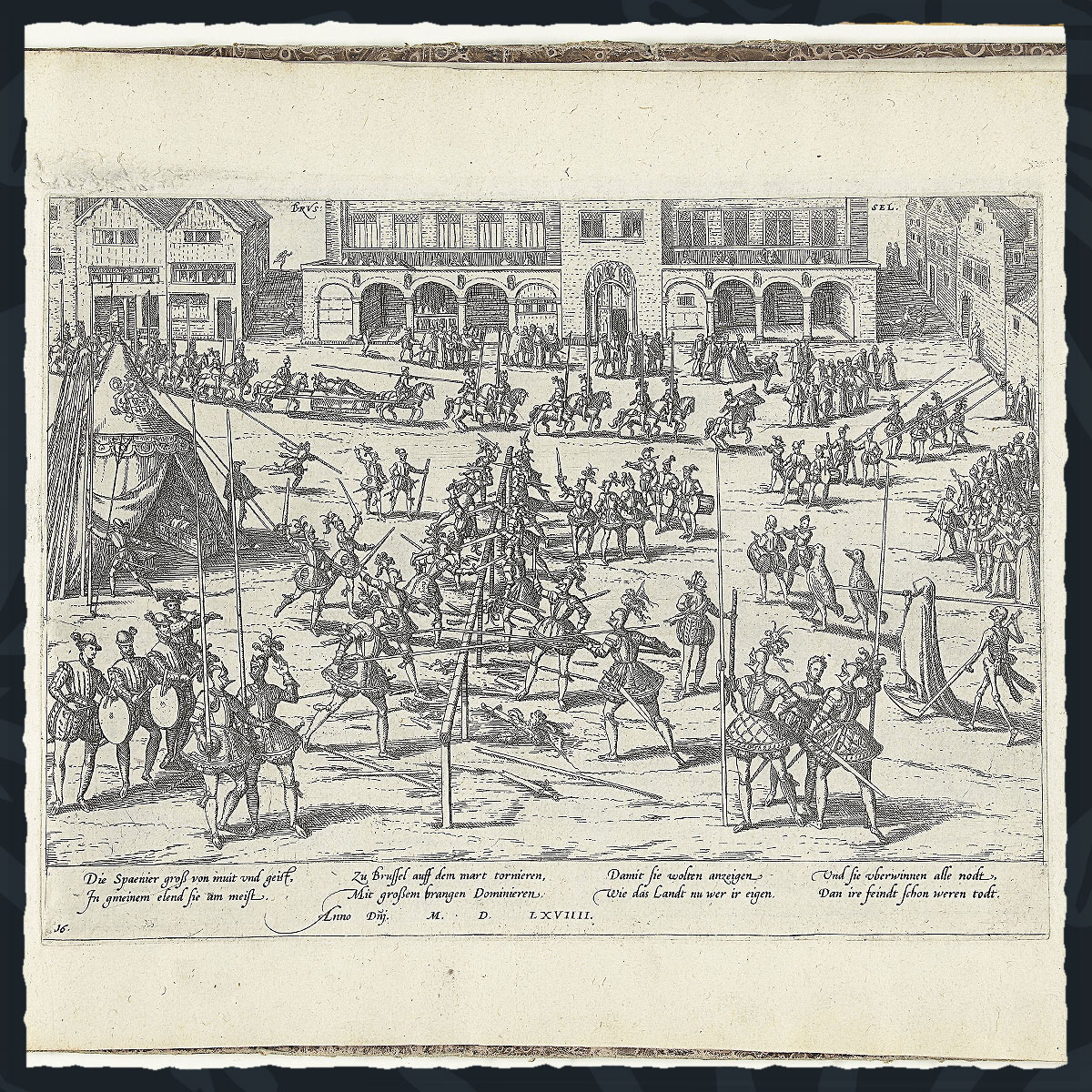
The goals varied, but seem to be of two major varieties: breaking swords and spears on your opponent or, more simply, to strike a number of blows.
It allowed participants to display their chivalric qualities and, often, the fine, costly ornamentation of their armor, without the murderous and financial risk of the earlier Medieval buhurts.
All that preamble simple to say this: hey, look at this cool depiction of a tournament at the barriers held in 1569 at Brussels, as depicted by Frans Hogenberg, now in the collection of the Rijksmuseum.
There are a number of interesting details here in addition to the tournament itself: a wounded figure being carted off on a stretcher carried by two horses,
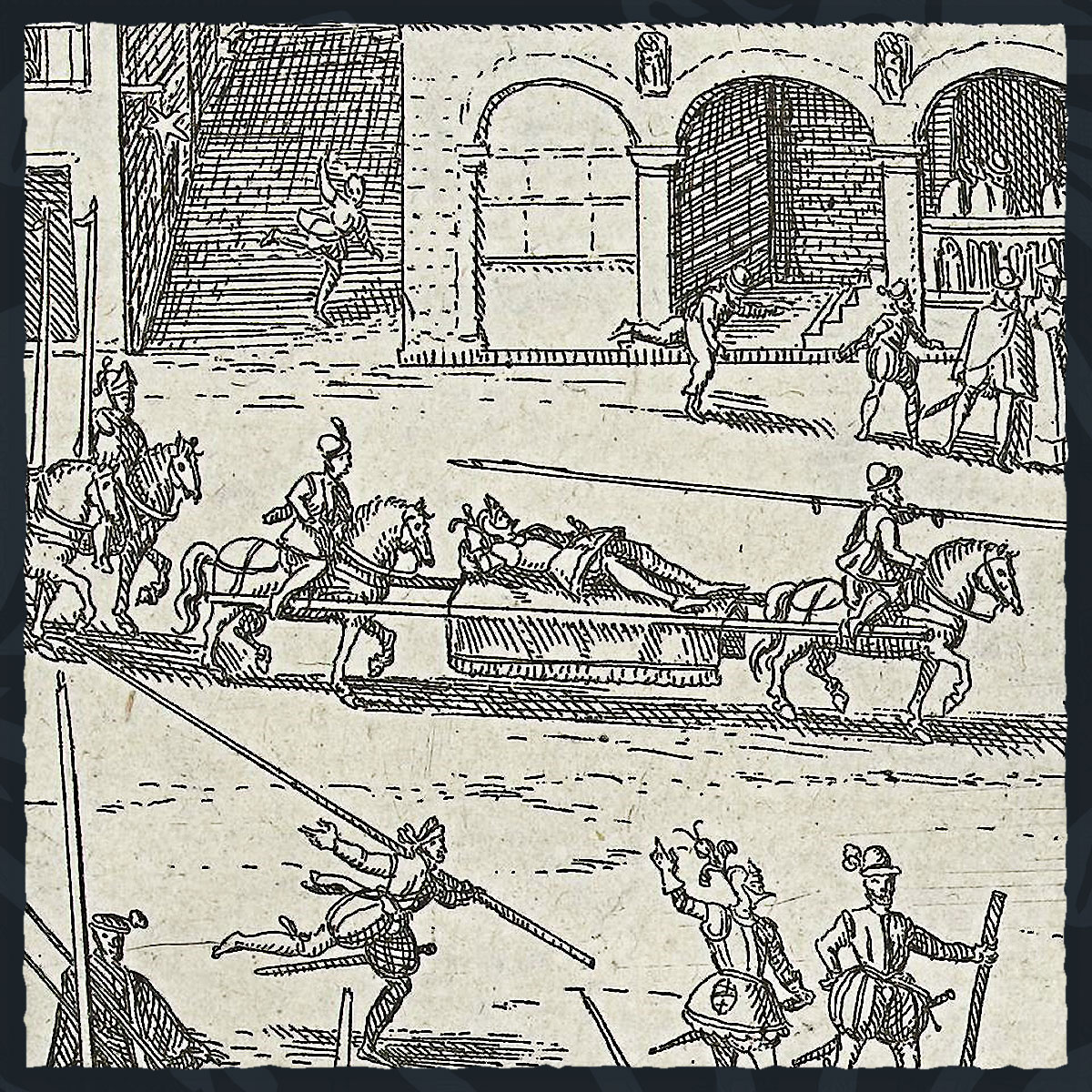
a chest full of all the goods you’d need for the tourney and…
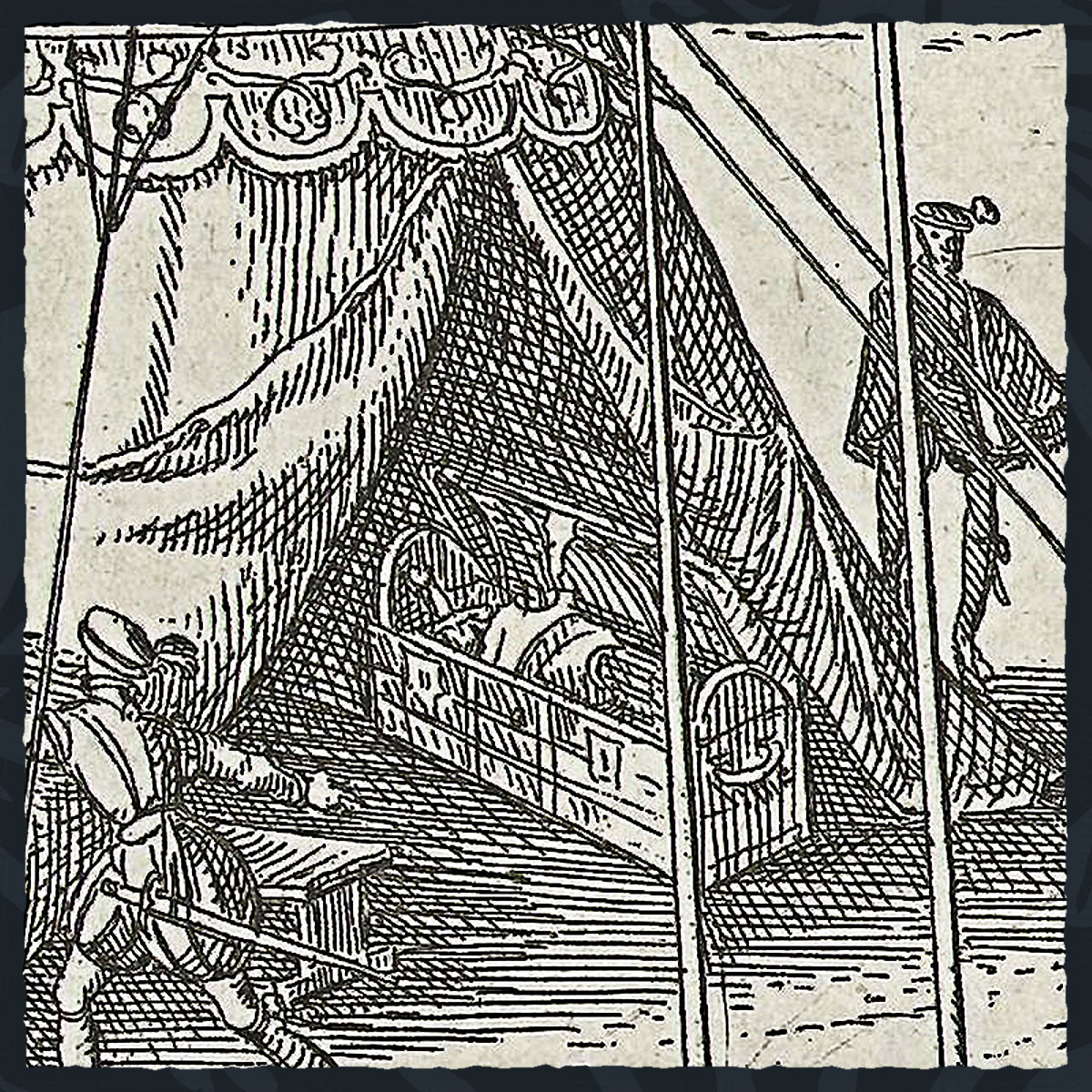
…and two giant birds followed by two spectres of death. Yeah, beats me on that end, but I suspect the caption mentions something!
